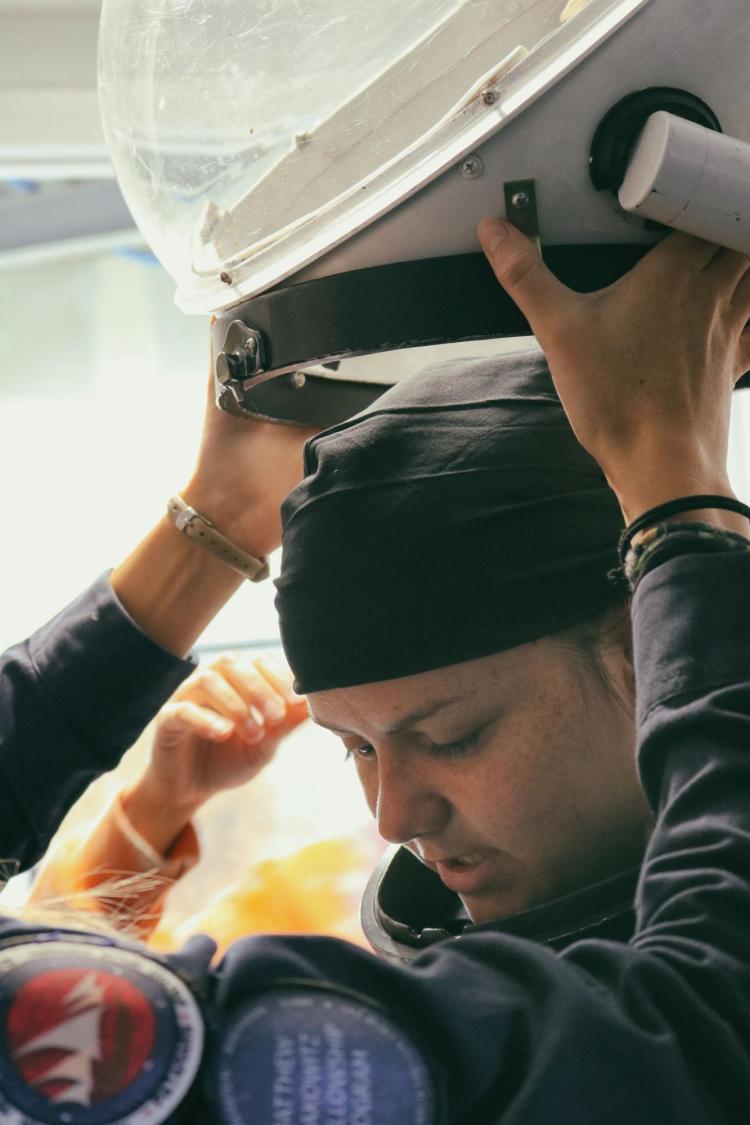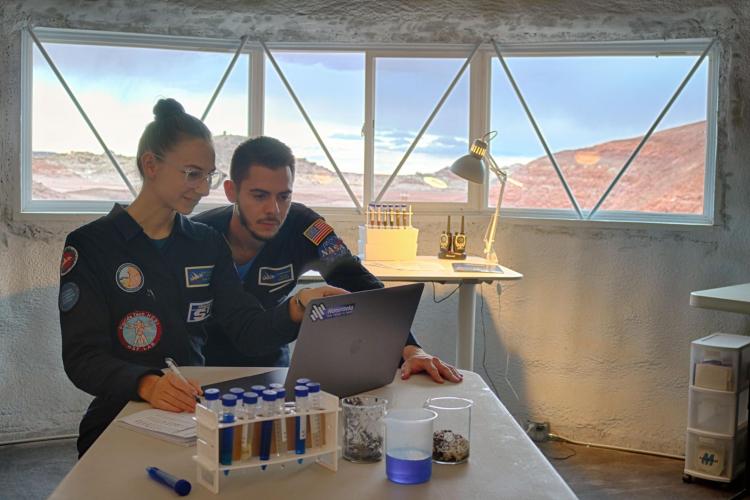Planning for life on Mars
Above: Hume getting a hand putting on the EVA suit.
Header Image: Posing in front of the Mars Desert Research Station sign.
Shayna Hume and a team of fellow students are trying out life on Mars through a unique Earth-based experience.
An aerospace engineering PhD student at the University of Colorado Boulder, Hume recently returned from a two-week stay at the Mars Desert Research Station, an “analogue” astronaut research facility in the remote Utah desert. Operated by the Mars Society, the center gives scientists and engineers the opportunity to test out future space experiments in an environment closer to home.
“Going to these stations produces a whole field of knowledge,” Hume said. “Until you start putting planned research into action, you can’t experience all the flaws. You have to test things before you send them out into space because sending stuff to space is expensive and it’s dangerous. We are testing how things will work in these other places, experiencing life and the pitfalls.”
The station aims to give participants a realistic look at life on another planet, including close quarters, limited communication with the outside world, and requirements to wear spacesuits during any trips outdoors.
“Living and working with a group of people in a 30-square-foot area is a different experience entirely,” Hume said. “We were always on call. If a problem comes up, you have to handle it immediately or we wouldn’t have water for the next day.”
Hume’s team included students from universities across the country. The group met as 2018 Matthew Isakowitz Fellows, an internship and mentoring program that aims to inspire the next generation of aerospace leaders.
The Mars Desert Research Station offered them the chance to come together again and expand their horizons.
“It was a unique experience. In some analogue astronaut programs, you’re a crew coming in and doing other people’s work. But MDRS lends itself to the crew’s creativity; you build your own experiments,” Hume said. “My career will be in helping us live and work on other planets. Learning to be a field scientist is one of the biggest takeaways I got from this. It’s a different skillset that you don’t get on the computer doing digital simulations.”
As humans consider future crewed missions to Mars or other planets, an important focus will be the search for life.
While gray-skinned, big-eyed aliens are highly unlikely to be lurking in the shadows on Mars, scientists believe the planet may once have had microbial life. In searching for it, Hume says it is important astronauts don’t accidentally “discover” bacteria on Mars that really came from Earth.
“The most important part for me was learning about planetary protection. We had cleaning procedures before we went into our clean room. Clean surfaces, clean hands, clean gloves,” she said. “Then go in and do a second clean before we entered the mock air lock. We don’t want to engage in any contamination, bringing something with us that would make the science falsely exciting for an entirely different reason than it actually is."



